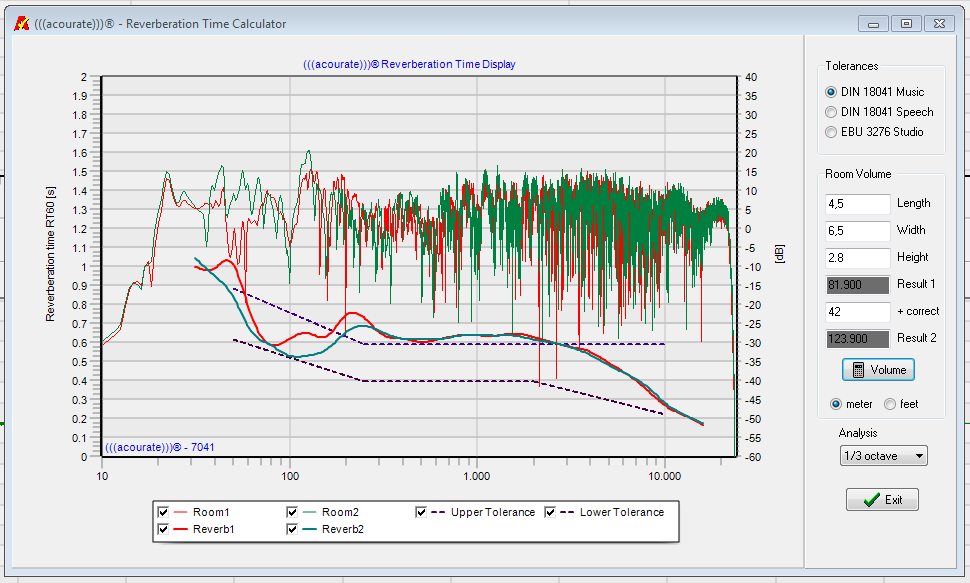Measure and Interpret Reverberation
Music is produced in the recording studio for a “standardized” listening room. The standard is set by DIN to reflect what DIN judges to be a typical environment in the listening room. The closer the reverberation in the listening room to the standard established by DIN, the more accurately the studio mix will be reproduced as intended by the mastering engineer. Depending on the size or volume of the listening room, and the reflectivity of the room surfaces at different frequencies, the reverberation will vary more or less from the DIN standard.
1. First use LogSweep-Recorder to record an Impulse Response. Load the PulseXXL.dbl file (the left channel) into curve 1 then select as Active Curve curve 2 and load PulseXXR.dbl (the right channel) into curve 2. Then select under TD-Functions Reverbation Time:

First you have to decide on the type of tolerance zones (displayed on the upper right):
Music: This is the recommendation for listening to music.
Speech: For optimal voice reproduction, for example, in classrooms or meeting rooms
Studio: Creates the tolerance zone to listen to music in the recording studio
In the window in the right column, the dimensions of the listening room should be entered. A simple volume calculation is given by length, width and height in a shoebox room. But many rooms have different shapes (L-room, sloping ceiling etc.) and thus the calculation is more complicated. The “+correct” value is allows to add/subtract an amount of correction volume to the volume calculated by length x width x height. Then click the volume button, and dotted lines appear representing the upper and lower tolerance of the corresponding DIN reverberation standard adapted to the room volume.
Under “Analysis” there is the option to change the smoothing algorithm used.
Interpretation: The listening room in this example has too much reverberation for music according to the DIN standard from 150Hz to about 3000Hz. This can be reduced if desired by using appropriate acoustic absorbers.
